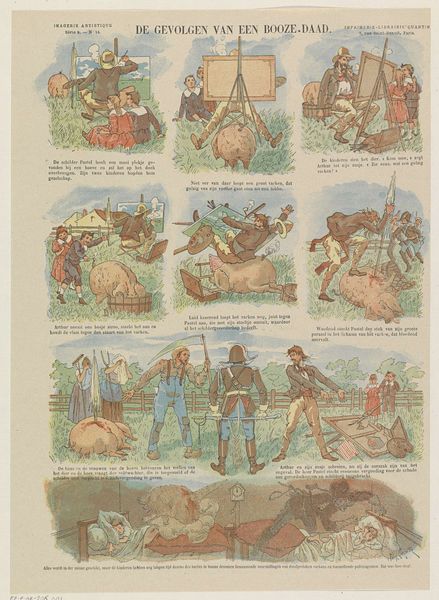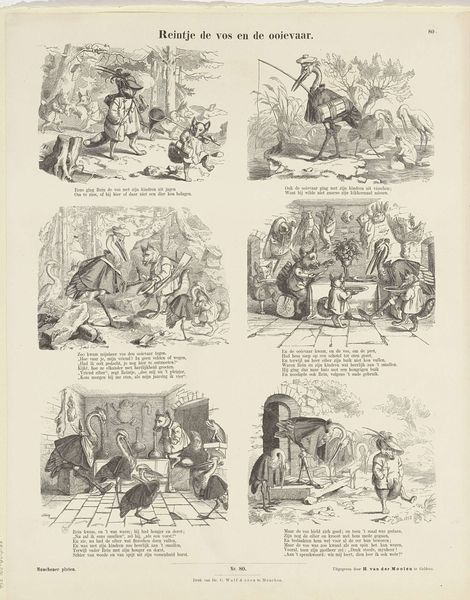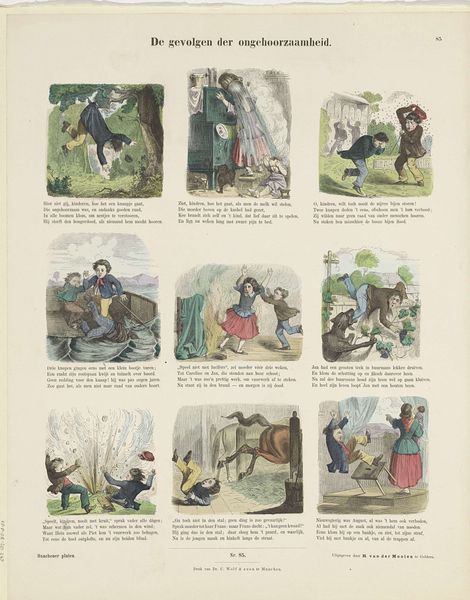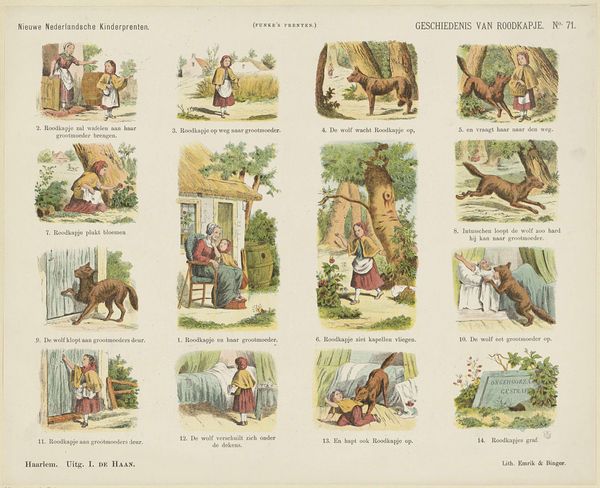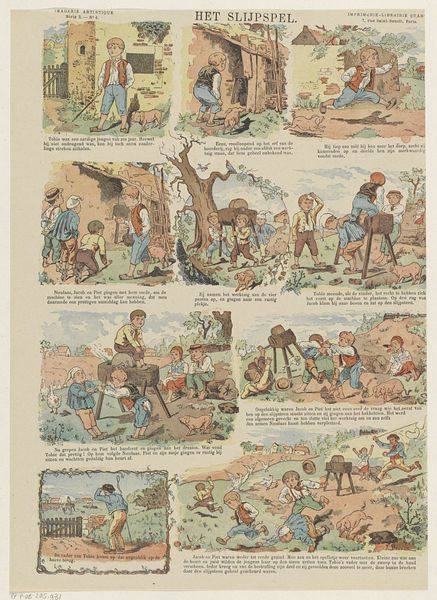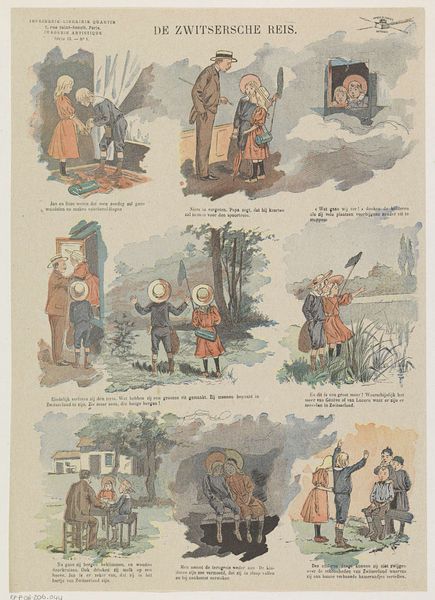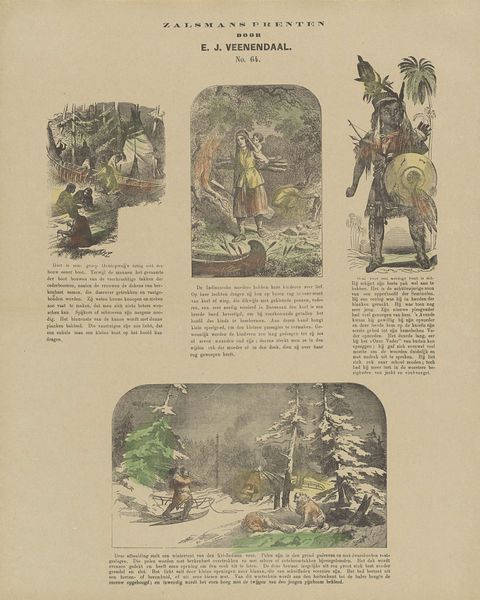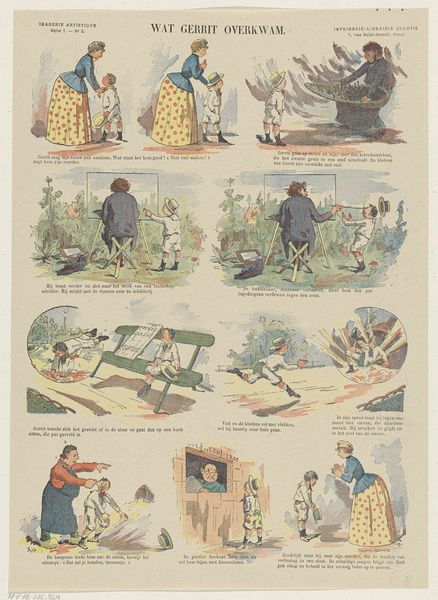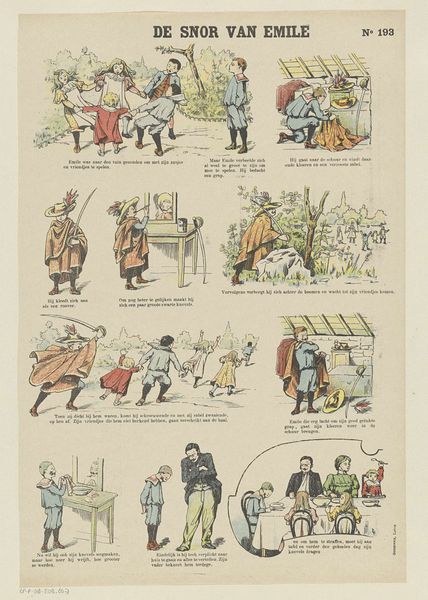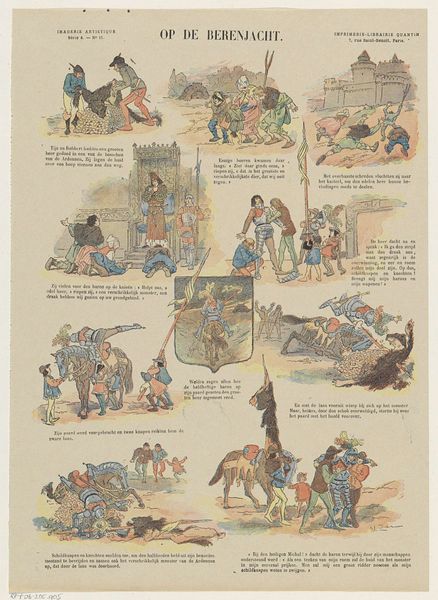
#
narrative-art
# print
#
caricature
#
folk-art
#
orientalism
#
genre-painting
Dimensions: height 368 mm, width 264 mm
Copyright: Rijks Museum: Open Domain
Curator: This image, “Het gestoorde feest”, or “The Disturbed Party,” by Albert Quantin, dates from somewhere between 1876 and 1893. It's a print, employing caricature to tell what appears to be a satirical narrative. What are your first thoughts? Editor: It’s a startling series of vignettes. There’s a palpable sense of chaos, but rendered in a very contained, almost clinical manner with these neat little boxes framing the action. A strange combination of lively subject matter and a somewhat detached presentation. Curator: It's orientalist, without question, feeding into established European narratives about "primitive" cultures. Note the portrayal of the indigenous figures. Their faces and postures are exaggerated, almost dehumanized. It is, sadly, not unusual for the period. Editor: Absolutely. The visual shorthand here paints them as Other, as figures of fun and objects of derision. Even the title "The Disturbed Party," carries an inherently condescending tone. It posits that any disruption to their natural state must stem from European interference, right? Curator: Precisely. Each scene is meticulously rendered with particular symbolic import. Look, for example, at the image of the supposed Edward being bound; then him later brandishing the captured flag like a prize. Quantin visually sets up an imperial narrative— the story of civilization conquering savagery. Editor: Yet it feels somewhat conflicted. I mean, there’s a degree of ridicule directed at the Europeans too. The white character seems equally absurd in his manner. The flag he raises seems more of an ironic statement given what preceded his triumph. Are we perhaps witnessing a veiled critique of colonial hubris? Curator: Perhaps. Even through a critical lens, the work becomes an unwitting artifact of its time. It crystallizes anxieties about empire, cultural clashes, and power dynamics while simultaneously reflecting the skewed lens through which such conflicts were often viewed. Editor: It leaves a disquieting impression, as you say, more for what it reveals about the period than what it accurately describes about this imagined encounter.
Comments
No comments
Be the first to comment and join the conversation on the ultimate creative platform.
